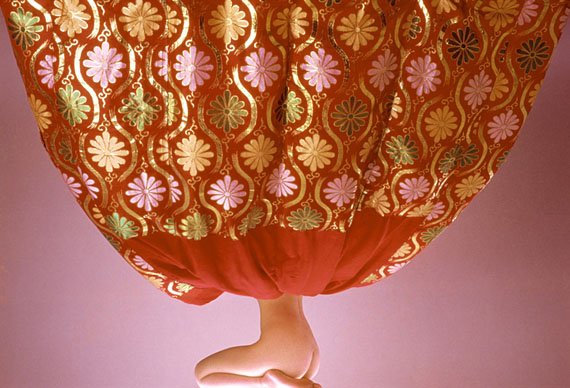
‘Iro’, from the series ‘Japanesque’, 1968 ©Ikko Narahara
Ikkō Narahara »
Where Time Has Vanished
Exhibition: 9 Jun – 30 Sep 2016
FujiFilm Square
7-3 Akasaka, 9-chome, Minato-ku
107-0052 Tokyo
Daily 10-19
Photo History Museum FujiFilm Square
7-3 Akasaka, 9-chome, Minato-ku
107-0052 Tokyo
+81-3-62713350
Daily 10-19
Narahara Ikko held his first solo exhibition Ningen no tochi (Human Land) in 1956, the year he worked, among others, with artists Ay-O (a.k.a. Takao Iijima) and Ikeda Masuo; an exhibition that generated great response and made him known as photographer to the Japanese public and the Japanese art world. Documentary photography from an individual point of view was what opened the way for new photographic expression after World War II and it was Narahara Ikko who was one of the pioneers of this style. In between the 1960s and 1980s he tirelessly published new works at home in Japan and abroad and from the 1990s on, despite being continuously stricken by illness, continues to bring forth inquisitive works by making this experience the subject of his photographs.
The title of this exhibition — ‘Where Time Has Vanished’ — is taken from his 1975 photo collection which consists of a series of works Narahara took in the United States in between 1970 and 1974. For Narahara, this series is what made him find himself as photographer and whose expression’s bold spatio-temporal scale can be said to make it into Narahara’s finest work. With this series as connecting node, this exhibition is divided into two parts, showing works done by Narahara between 1954 and 1970 and works from the period between 1970 and 2000. While both parts will feature works from the series ‘Where Time Has Vanished’, the first part, entitled ‘Journey to a Land so near and yet so far 1954-1974’, will show parts of his documentary photography with works such as Mukokuseki-chi (Stateless Land), Ningen no tochi (Human Land) and Okoku (Domains). The second part, titled ‘Beyond perspective 1970-2002’, then, will focus on his experimental works such as Fukkatsu (Resurrection) and Inner World. Together, these two parts, thus, make accessible a broad range of representative works from Narahara’s half-century career. Both parts’ titles trace back to Narahara himself and symbolize his steps towards realizing himself as photographer as well as his insatiable curiosity.
Lying ill ever since, ‘Double Vision — Paris 2000 — 2002’ from 2002 is Narahara’s last work. Nevertheless, even today his works proof to be stimulating as they ceaselessly point towards a future yet to come.
Narahara Ikko was born 1931 in Fukuoka. After graduating from Chuo University’s law faculty in 1954, he enrolled in Waseda University’s Graduate School of Art, specializing in art history. In 1955 he joined the avant-garde art group jitsuzaisha formed by Ay-O and Ikeda Masuo and in 1956 held his first solo-exhibition which generated great response. From 1959, the year he graduated from Waseda University, he participated in VIVO, an independent agency by photographers which he set up together with TOMATSU Shomei, HOSOE Eikoh and KAWADA Kikuji until it was dissolved in 1961. Over half a century he was active as an artist at his homeland Japan and abroad. At the moment he is undergoing treatment for his medical condition. He has published a vast amount of photo collections and held a great number of exhibitions, but has also received various awards, including the Art Encouragement Prize awarded by the Ministry of Education, the Award for Distinguished Service from the Photographic Society of Japan and the Medal with Purple Ribbon by the Japanese Government. He also published new work during recent years, is also highly regarded and continues to draw attention.�